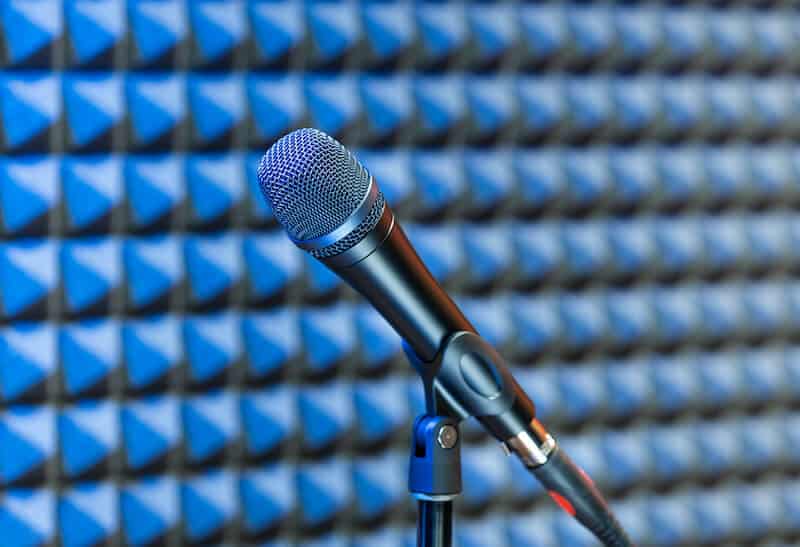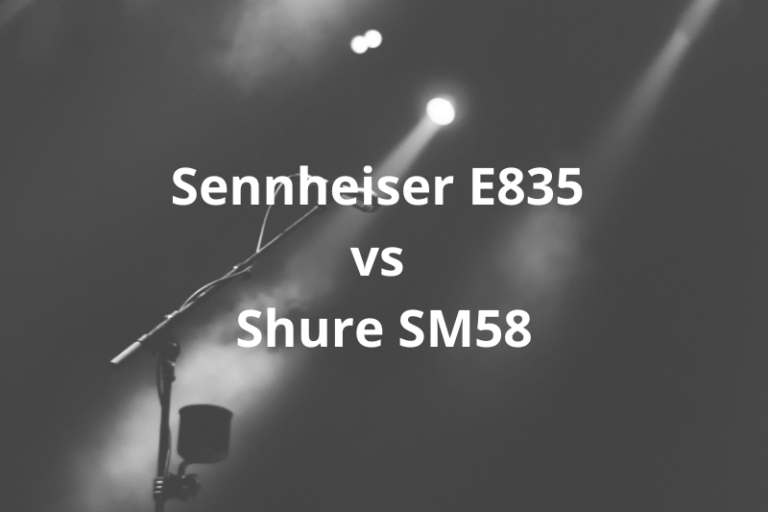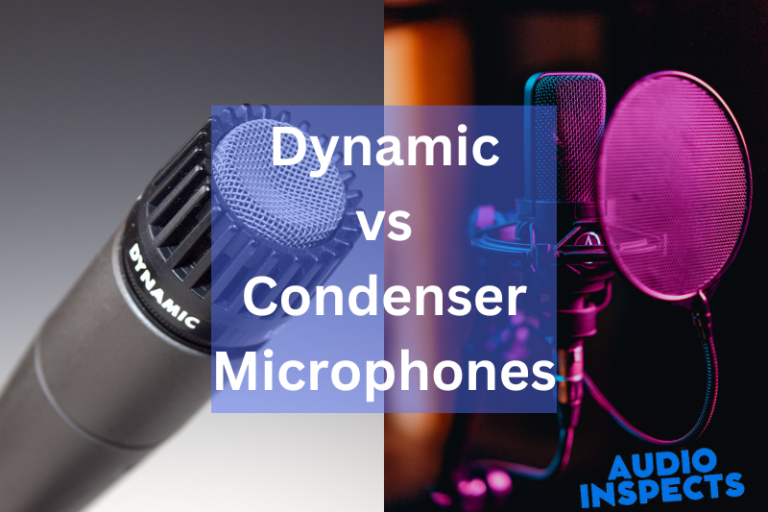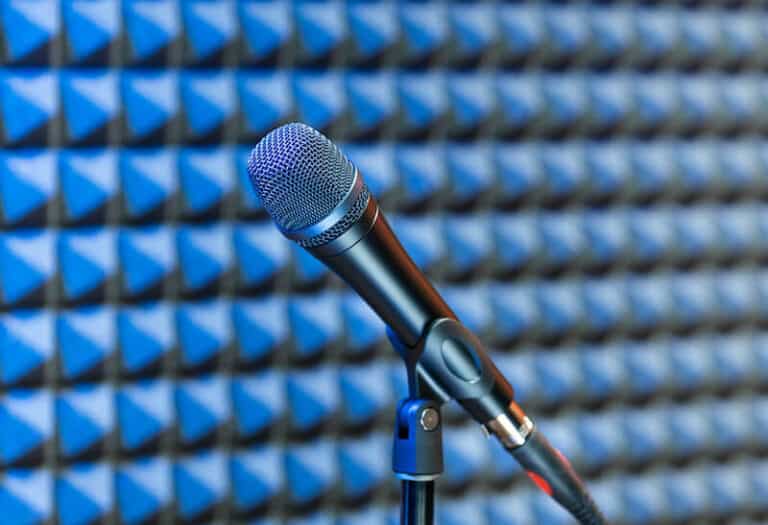What Microphones Need Phantom Power?

We conduct independent testing and research of products, so you can make an informed decision before making a purchase. And when you do decide to make a purchase through our links, please note that we may earn a commission, but this does not affect the honesty of our reviews.
We’re going to talk about the need for phantom power in microphones. The term “phantom power” comes from the fact that the microphone can draw power from an external source (which isn’t usually the case).
It’s a feature that’s often used by broadcasters and other professionals who work with microphones. It’s also a feature that’s often overlooked by those who have a microphone at home.
We’re always looking for ways to improve our recording equipment, and one way we do that is by using phantom power. In this article, we’ll explain exactly what phantom power is, how to use it, and what microphones need phantom power.
What Is Phantom Power for Microphones?
Phantom power helps with dynamic range compression (compression) and frequency response compensation. In other words, when your mic has phantom power turned off, the preamp circuit is completely open, so no signal is sent to the amp.
When your mic doesn’t have phantom power on, the amplifier turns on its own switch, which connects the mic to the input of the amp. So even though nothing is coming into the input of the amp, the amp still amplifies the incoming audio.
In order for a microphone to be able to do this type of thing, it must contain an internal battery. This battery is also known as phantom power since it’s powering up that section of the mic.
How Does Microphone Phantom Power Work?
A microphone uses electrical signals to detect sound. The audio signal generated by the microphone is amplified, mixed, and converted into a digital format. This type of amplification process requires electricity. Therefore, you need to make sure that your device has enough power to operate properly.
If you want to know more about how microphones use direct current, then keep reading below. You’ll learn everything that you need to know.
DC refers to direct current. In other words, it’s a steady flow of electrons that moves in one direction without any pausing or stopping. It is used to provide the energy needed to amplify and mix the sounds that you record.
In order for your device to have sufficient DC power, you must connect the microphone to an external source of electricity. That way, you can get rid of all the problems that might arise when using batteries.
You should also avoid connecting multiple devices to a single outlet. If there is no available power, then nothing will happen.
Why Do Microphones Need Phantom Power?
Microphones are used in a wide range of situations. For example, you may have a microphone attached to a camera to record sound while filming a movie, a microphone in a radio station to capture sounds of a live broadcast, or a microphone in a public address system to play recorded messages over a speaker.
Regardless of the use, all microphones require phantom power to operate.
Phantom power is a small amount of electrical current that is required to operate a microphone. This small amount of current is usually supplied by a battery, such as a lithium-ion cell.
Phantom power is typically supplied by a microphone that is plugged into an external power source, such as a wall socket. When using a microphone, the user simply plugs the microphone into the wall socket and the microphone receives the phantom power from the wall socket.
However, some microphones are not equipped with a wall socket. Instead, they use a rechargeable battery, such as a lithium-ion cell. The battery is charged when the microphone is plugged into an external power source, such as a wall socket. Once the battery has been fully charged, the microphone is ready to use.
When using a microphone that requires phantom power, the user plugs the microphone into the wall socket to charge the battery. Once the battery has been fully charged, the microphone is ready to use.
When Does a Mic Need Phantom Power?
I’ve been using a small mic that doesn’t have phantom power, and I’m wondering if I should invest in a better mic or if it’s fine to use this one.
Phantom power is the ability to run a microphone without having to plug it into an audio interface. This type of mic is usually used by recording bands and musicians.
With phantom power, you can run the mic without a mixer. You can record your vocals and guitar on separate tracks. You can use the mic for singing and playing guitar at the same time.
So, when does a mic need phantom power?
If you’re a musician who uses a small mic, you may not need phantom power. However, if you’re a singer or you want to record vocals and guitar at the same time, then you’ll definitely need phantom power.
You can get phantom power from most microphones. But, you’ll have to pay for it. Most mic manufacturers offer phantom power for their mics.
Some smaller mics don’t have phantom power, but they’re still pretty good. If you’re not sure, then you can check out the reviews on Amazon.
How to Know If Mic Needs Phantom Power?
A traditional microphone uses a magnetic circuit to convert vibrations into electrical signals. This means that it can pick up sounds from anywhere. But, specific frequencies can cause interference.
For example, when you have a guitar plugged in, you will notice static and hum. You can eliminate this problem by connecting your microphone to an AC power source.
If you’re unsure whether your microphone needs a DC or AC power supply, then it’s best to consult with the manufacturer. There are many different types of microphones available, so you should make sure that the one you choose works well with your computer or other devices.
What Microphones Need Phantom Power?
Now, let’s see what microphones need phantom power for different types, including condenser mics, dynamic mics, ribbon mics, and tube mics.
Does Condenser Mic Need Phantom Power?
Condenser mics are very sensitive to power fluctuations. They need a constant power source, like phantom power, to operate properly.
You don’t need phantom power to use condenser mics in your recording setup, but you do need to be aware of how they work and what you can expect when you use them.
How Do Condenser Mics Work?
The condenser mic is a very sensitive microphone that’s used to record instruments and vocals.
It works by using a condenser diaphragm to pick up sound waves. The diaphragm is placed on top of a capacitor, which is connected to an amplifier.
The amplifier boosts the signal, which is then fed into an audio preamp. This is where the signal gets cleaned up and processed before it goes into a recording device.
Condenser mics are often referred to as dynamic mics because they’re designed to record sounds from instruments and voices. They’re not designed to record the ambiance of a room or the sound of the air moving through the room.
The microphone is designed to pick up the sound of instruments and voices, so it needs a constant power source. Phantom power is a good way to supply this constant power.
Does Dynamic Mic Need Phantom Power?
Yes, dynamic microphones need phantom power.
Dynamic microphones are special microphones that use an internal battery to power the microphone’s circuitry. Unlike condenser microphones, which require a separate power source to operate, dynamic mics don’t require a power supply.
That’s great, but there’s one problem. Dynamic mics require phantom power to operate. And without phantom power, they won’t work.
Phantom power is an electrical signal that’s used to provide a bias current to a microphone’s amplifier. The amplifier uses the bias current to amplify sound waves.
Without phantom power, the microphone won’t amplify sound. So, if you’re using a dynamic microphone and don’t have phantom power, you’ll need to make sure you have a power source connected to your mic.
Does Ribbon Mic Need Phantom Power?
A ribbon microphone is a great choice for many audio applications. They are compact, easy to use, and most importantly, they require no external power.
However, you might find yourself in a situation where you need phantom power to operate your mic. If this is the case, there are a couple of options.
The first is to simply plug your mic into a USB port on your computer. This will allow you to record through your computer and have the option of using phantom power if needed.
The second option is to use an external power supply. These come in all shapes and sizes, and some even include phantom power. The two most popular types of power supplies are battery-powered and wall-powered.
If you’re looking for a simple solution, then a battery-powered power supply is a good option. They are easy to use, and they will work with any mic that doesn’t require phantom power.
However, they can be a bit bulky, and they also have a limited life span. If you want a mic that will last a long time, then a wall-powered power supply might be more appropriate.
There are many different types of wall-powered power supplies on the market, and each one has its own advantages and disadvantages. For example, some have a built-in microphone preamp, while others don’t. Some are very portable, while others are heavy-duty and require an AC power outlet.
The bottom line is that there is no one best type of power supply. The choice will depend on your needs. So, if you’re in the market for a new microphone, be sure to research your options before purchasing.
Does a Tube Mic Need Phantom Power?
No, a tube mic doesn’t need phantom power.
A tube mic is a microphone that uses a vacuum tube to amplify the sound of the voice. Vacuum tubes are an older technology than solid-state circuits and are much more sensitive. But they are also a lot more expensive and are not as reliable as solid-state components.
Tube mics are often used in situations where they are needed, but the sound quality isn’t critical. For example, tube mics are commonly used in situations where the sound is to be recorded for playback on an instrument or in a recording studio.
Tube mics are also used in situations where sound quality isn’t critical, such as in an orchestra, in a concert hall, or on a stage.
Our Mission: At AudioInspects, we are dedicated to providing the most comprehensive and authentic reviews of audio equipment on the market. We conduct independent testing and research of products, so you can make an informed decision before making a purchase. Our mission is to help you find the best audio equipment to improve your listening experience. So trust us to deliver the most reliable recommendations and advice.
Disclosure: When you do decide to make a purchase through our links, please note that we may earn a commission, but this does not affect the honesty of our reviews. You can read our affiliate disclosure in our Disclosure.




![The 10 Best Karaoke Microphones [Ranked & Reviewed]](https://audioinspects.com/wp-content/uploads/2022/05/best-karaoke-microphones-2022-768x512.jpeg)

